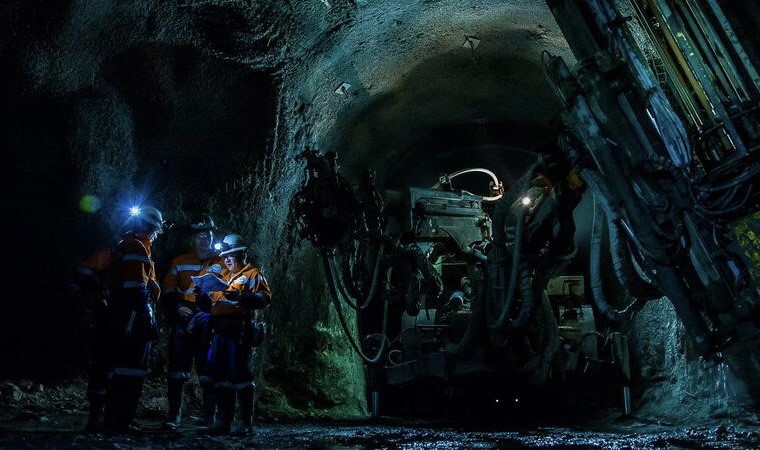It has the highest recycling rate of any engineering metal, every child born today will use about 1,500 pounds of it, between 500 and 600 pounds of it were used to make billions of doorknobs in the United States, and the Statue of Liberty is plated with upwards of 179,000 pounds of it.
“It” is copper.
From consumer goods to crafting American icons to operating power plants and sustaining green energy, the demand for copper is growing at greater rates than ever.
Recent reports demonstrate that the global need for copper is anticipated to rise by as much as 50 percent over the next two decades. And, guess which corner of the world holds 27.1 percent of the global market size in copper? The United States. Zooming in closer, you’ll see that Arizona accounts for 75 percent of the copper mined in the U.S.
So, the million-dollar question — or perhaps, more appropriately, the 28-million-tonnes question (28 million tonnes is the annual amount of copper in demand) is — will Arizona rise to meet the growing demand for copper?
Arizona’s mining experts collectively say, “yes.” After all, the state hasn’t earned the moniker “Copper State,” without reason. As the need for minerals grows, Arizona’s mining industry is not only poised to fulfill current and future demand, but to also benefit from it.
Mineral mining economic impact
“Mining has always been a large contributor to Arizona’s economy and I see that contribution growing larger over time,” says Brock Johnston, general manager at Carlota Copper Co. “With the increased demand for minerals, there will be an increase in the number of direct and indirect jobs associated with the mining industry in Arizona.”
Johnston predicts that the local economy will benefit, in particular, from the increasing demand for copper to produce electric vehicles and possibly lithium for batteries used in both EVs and electric utility storage.
Steve Higgins, senior vice president and chief administrative officer for Freeport McMoRan, agrees. “Freeport-McMoRan’s Arizona operations had a $2.9 billion direct and indirect economic impact to the local economy (in 2019), according to the L. William Seidman Research Institute at Arizona State University,” he says.
Additionally, Freeport-McMoRan employed 9,482 people last year. The ripple effect of that employment created another 17,926 jobs in Arizona (yielded from these employees’ wages and taxes, plus the services purchased), according to Higgins.
It’s also important, Higgins explains, to understand the Arizona mining industry’s position as an export business in benefitting the state’s economy.
“Most people might be surprised to learn that metal ores were the third-largest Arizona export of goods after semiconductors and aerospace in 2018, according to the Business Roundtable,” Higgins says, “bringing in money from outside our state to generate local economic activity and jobs.”
Renewable energy and mineral demand
And that economic impact is only expected to flourish.
“Major forecasted shifts, such as the transition to a low-carbon future and development of green technologies, will only increase our need for copper mining over the coming decade in order to collect and store energy sourced from renewable resources,” says Carson Richardson, senior research scientist for the Arizona Geological Survey for the University of Arizona. “Not only will we see an increased need for mined copper, but also a myriad of other mineral resources.”
One of the other coveted minerals for which Richardson refers is molybdenum. Molybdenum is a versatile element with diverse applications in the chemical, engineering and petroleum industries. Molybdenum and its alloys are key components in chemical and metallurgical applications.
“We produce molybdenum at three of our Arizona operations as a copper byproduct,” Higgins says, “and our company is the world’s leading producer and supplier of the metal.”
Following copper and molybdenum, Arizona’s top-mined minerals include crude perlite, silver, and zeolites.
But, because of its versatility and value across multiple industries, copper remains top-tier in mineral demand.
“Copper is key,” Higgins says, “in enabling material for decarbonization.”
In terms of renewable energy generation for wind and solar, four to six times more copper is used compared with what’s required for traditional energy generation. Additionally, according to Higgins, electric vehicles can consume as much as four times more copper than traditional internal combustion engines.
“I think green energy is going to increase the demand for copper even more,” says Dr. Brad Ross, director of the Geotechnical Center of Excellence at the University of Arizona. “And, we should expect the demand for copper from Arizona to continue, and even increase. Mines like Resolution, Rosemont and others are essential because our society demands more copper, and will demand more copper because of the clean energy issues.”
Copper in consumer markets
It’s important to remember that while macro applications and utilities like wind and solar renewable energy will continue to require high copper yields, so will consumer goods and products like electrical vehicles (which we briefly touched on), electronics (phones, laptops, and more), and the infrastructure of most homes.
“Within our homes today, we’ve gone wireless as far as our networks, but the energy part of it hasn’t,” Ross says. “My home, when we built it, was fitted with special lines to put in solar panels. All these add up in terms of (the demand for) copper.”
An average 2,100-square-foot house, for example, contains the following amount of copper:
• 195 pounds of building wire
• 51 pounds of plumbing tube, fillings, and valves
• 47 pounds in built-in appliances
• 24 pounds of plumbers’ brass goods
• 12 pounds in builders’ hardware
• 10 pounds of other wire and tubing
“Nearly 70 percent of copper is used in electrical applications across construction, automotive, and power markets, and virtually all consumer electronics,” Higgins says.
“Copper is crucial to our modern way of life since it’s used in everything that has any kind of wiring in it,” Johnston adds. “A few examples include electric motors, power generators, wiring for buildings, marine vessels, aircraft, vehicles, and every electronic device you can think of.”
Meeting demand
“To the extent these technologies are increasingly adopted,” Higgins says, “the demand for copper will grow — perhaps slowly initially, but much more rapidly over time. In addition, building renovations, motor and transformer upgrades, 5G installations, and the expected U.S. and global infrastructure programs will further add to copper demand.”
For example, Richardson points out that “trends elsewhere, such as the UK’s recent announcement of a ban on sales of new combustion-engine vehicles starting in 2030, may be predictive of what we can expect in the U.S. over the next decade.”
Experts says this is a major opportunity for Arizona mines to support the demand. And the favorable market, according to Higgins, will help support mining in Arizona going forward and be a huge catalyst for Arizona’s economic expansion.




